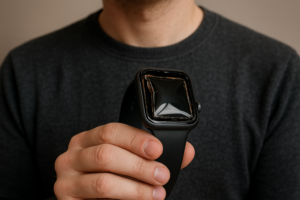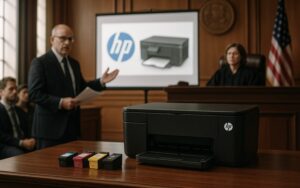
Apple Watch Battery Swelling Class Settlement
Introduction In Smith et al. v. Apple Inc., plaintiffs claimed that certain Apple Watch models (Series 0, 1, 2, and 3) suffer from a propensity


Introduction In Smith et al. v. Apple Inc., plaintiffs claimed that certain Apple Watch models (Series 0, 1, 2, and 3) suffer from a propensity

Introduction A proposed class action titled Renee Robinson et al. v. HP, Inc. alleges that HP deployed firmware or software updates that disabled printers if
Product liability class action lawsuits occupy a critical position at the intersection of consumer protection, corporate accountability, and public safety. When defective or dangerous products cause widespread harm, the class action mechanism allows affected individuals—often numbering in the thousands—to pursue justice collectively. These cases not only compensate victims for their injuries and losses but also drive systemic improvements in product design, corporate safety protocols, and regulatory oversight.
Through decades of litigation, product liability class actions have shaped industries ranging from pharmaceuticals to automotive manufacturing. They serve as both a deterrent against corporate negligence and a safeguard ensuring that consumer well-being remains paramount in the marketplace.
Under U.S. law, product liability refers to the legal responsibility of manufacturers, distributors, and retailers for injuries caused by defective products. Theories of liability generally fall into three categories:
Design Defect – when the product’s overall design is unreasonably dangerous, even if properly manufactured.
Manufacturing Defect – when a specific product deviates from intended design specifications, making it unsafe for use.
Failure to Warn (Marketing Defect) – when a company fails to provide adequate instructions or warnings about known risks.
In the class action context, these claims often arise when large numbers of consumers are exposed to the same defective product—such as a vehicle with a faulty airbag or a pharmaceutical drug with undisclosed side effects.
To proceed as a class, plaintiffs must meet the requirements of Rule 23 of the Federal Rules of Civil Procedure, including numerosity, commonality, typicality, and adequacy of representation. Courts assess whether questions of law or fact common to the class predominate over individual issues and whether collective treatment promotes efficiency and fairness.
Because the economic harm or physical injury per consumer may be too small to justify individual lawsuits, class certification ensures that corporations cannot evade accountability simply because their misconduct affected too many people in small ways.
Product liability class actions can result in:
Monetary compensation for injuries, deaths, or economic losses
Refunds or replacement of defective products
Medical monitoring for affected consumers
Injunctive relief requiring changes in product design or labeling
Corporate reforms, audits, or safety oversight measures
These remedies not only restore financial and physical losses but also prevent future harm by compelling manufacturers to adopt safer standards.
In 2014, General Motors recalled millions of vehicles after discovering that faulty ignition switches could unexpectedly disable engines, power steering, and airbags. Evidence showed that GM had known of the defect for over a decade before issuing recalls.
The litigation resulted in a series of settlements exceeding $2.5 billion, including payments to victims of fatal and serious accidents, fines, and restitution to consumers for lost vehicle value. The case spurred sweeping internal reforms at GM, new safety oversight procedures, and legislative reforms to improve recall transparency. It remains one of the most influential automotive product liability actions in history.
The defective airbags manufactured by Takata Corporation contained inflators that could rupture during deployment, releasing metal fragments and causing serious injury or death. Affecting more than 40 million vehicles across multiple automakers, the defect led to the largest automotive recall in U.S. history.
The resulting litigation produced settlements exceeding $1 billion, including funds to compensate victims and accelerate airbag replacements. Takata ultimately filed for bankruptcy, and the case fundamentally reshaped global safety standards for automotive components.
Johnson & Johnson faced thousands of lawsuits alleging that its talc-based baby powder products contained asbestos and increased the risk of ovarian cancer. Plaintiffs alleged that the company knew of the contamination but failed to warn consumers.
The litigation yielded billions in verdicts and settlements, and in 2020, the company discontinued the sale of talc-based baby powder in North America. The case underscored corporate responsibility for product transparency and led to stronger regulatory scrutiny of cosmetic and personal care products.
Farmworkers and consumers alleged that prolonged exposure to Monsanto’s Roundup herbicide, containing glyphosate, caused non-Hodgkin lymphoma. Plaintiffs claimed that Monsanto concealed evidence of the product’s carcinogenic potential and manipulated scientific data to downplay risks.
After several high-profile jury verdicts totaling hundreds of millions of dollars, Monsanto’s parent company Bayer agreed to a $10 billion settlement to resolve tens of thousands of claims. The litigation prompted changes in labeling practices and raised global awareness of agricultural chemical safety.
Volkswagen’s “Clean Diesel” vehicles were marketed as environmentally friendly while using software designed to cheat emissions tests. Although often categorized as consumer fraud, the case also involved product liability principles because the vehicles’ design and software rendered them unfit for their intended environmental performance.
The class action culminated in a $14.7 billion settlement, including consumer buybacks and environmental remediation. The case reshaped automotive regulatory compliance worldwide and reinforced public expectations of corporate honesty in product performance claims.
In 2021, Philips recalled millions of CPAP and ventilator devices after discovering that sound abatement foam in the machines could degrade, releasing toxic particles and gases inhaled by users. Plaintiffs alleged that Philips failed to warn consumers despite early evidence of risks.
The litigation, ongoing as of 2025, has already produced substantial interim settlements and is expected to yield one of the largest medical device liability outcomes in history. The case emphasizes the continuing role of class actions in ensuring medical device safety and corporate accountability in healthcare technology.
These cases directly lead to safer products. Through litigation, companies are compelled to redesign defective items, reform testing protocols, and disclose previously hidden risks. The ripple effect extends far beyond the parties involved, benefiting millions of future consumers.
The financial impact of large settlements and the reputational damage that accompanies them serve as powerful deterrents against corporate misconduct. Executives and engineers now understand that cost-cutting at the expense of safety can produce catastrophic legal and financial consequences.
Litigation discovery often uncovers internal documents showing what companies knew and when they knew it. Public exposure of these materials forces corporations to act with greater transparency and honesty, strengthening consumer trust.
By consolidating individual claims, class actions give consumers—who often lack the resources to litigate individually—an effective voice against multinational corporations. This democratization of access to justice reinforces public confidence in the legal system.
High-profile product liability class actions frequently spur legislative and regulatory responses. Agencies such as the Consumer Product Safety Commission (CPSC), the Food and Drug Administration (FDA), and the National Highway Traffic Safety Administration (NHTSA) often adopt stronger oversight measures in the wake of major settlements.
Product liability class actions play a vital role in preserving public safety, corporate accountability, and consumer confidence in the marketplace. By exposing dangerous products, compelling recalls, and holding corporations financially responsible for harm, these lawsuits transform private litigation into a public good.
From defective vehicles and pharmaceuticals to toxic chemicals and unsafe household products, the cumulative effect of this litigation has been to make daily life safer for millions of Americans. These cases reaffirm a foundational principle of American law: that profit must never come before safety.
We are a leading online resource for consumers seeking clear, trustworthy information about ongoing and emerging class action lawsuits across the United States. Designed to empower individuals with knowledge and access, the site connects users directly with experienced class action law firms who can evaluate potential claims and represent them in pursuing justice through collective litigation. From product defects and data breaches to employment and securities fraud, ClassActionFirms.com provides up-to-date summaries of major cases, explains how class actions work, and helps consumers find qualified legal counsel to protect their rights and hold corporations accountable.